World Fine Art Professionals and their Key-Pieces, 223 - Zaida Oenema
World Fine Art Professionals and their Key-Pieces, 223 – Zaida Oenema
At the Paper Biennial in Museum Rijswijk I saw beautiful work. Among others that of Zaida Oenema. Her work was concentrated, less exuberant than the other work at the Biennale. It was related to that of the Nul artists such as Jan Schoonhoven, Armando and Henk Peeters.
Coincidentally or not, when I walk into Zaida Oenema’s work space in Weimarstraat, I see a copy of De Groene Amsterdammer with Jan Schoonhoven on the front. “I really like Schoonhoven’s work. I also use certain elements of the Nul or Zero group in my work, such as repetition, monochromy, light and movement. A difference is that I do not try to avoid or exclude the individual handwriting or trace of myself as a maker in my work. It is precisely the interplay between the almost ‘machine’ repetitions and the manual nature of making a field of tension that I find interesting. I would rather call my work ‘reductive’. ”
Silence
Zaida Oenema worked for ten years in ‘De Grote Pyr’, an artists’ space on the Waldeck Pyrmontkade, but since she moved to Weimarstraat two years ago, she has had one of the rooms in her new home as her studio. “This is intended as a temporary solution, until I find a studio elsewhere, but I really enjoy working at home.”
Silence is her theme. “By silence I do not mean the lack of sound. I am concerned with a certain kind of peace, that you clear your head, free from repetitive trains of thought or to-do lists, so that you can see clearly and you can once again be amazed about things around you. ” She wanted to become a photographer and went to the photography department at the St. Joost Academy (KABK) in The Hague. She then worked as a freelance photographer for three years. At a certain point she got tired of it and decided to study again, now at the St. Joost Academy and got a master’s degree in photography. “I mainly did performative actions there that I recorded with the help of photography and video. It was about how people in our western society relate to society, full of unwritten rules, assumptions and expectations. ”
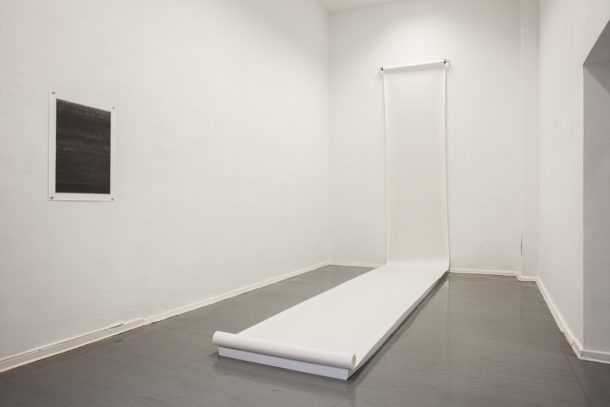
zaida oenema MB 3
Exhibition at GLUE Contemporary Contemplations
Projectraum Kunstquartier Bethanien Berlin
July 2018
The Perfect Dot
After her master’s degree, the interest in photography started to decrease and her urge for ‘matter’ – being physically busy with material – became stronger. “I had had enough of all that digital and computer work. I wanted to play, feel and smell again. Around 2010 my focus shifted more and more from the external person – the person as a physical presence in my work – to the intrinsic person in which the thought process is more important. The manual making, the material itself and the method / action became more and more central. ”
An example of such a transitional work from this period is ‘Dance’ (2009) in which she literally ‘removed’ the person (herself) from the image. “The basis of this work is my video ‘All My Clothes, The Hague 2008’, in which you see me putting on all my clothes on top of each other – and how that becomes more and more difficult. For ‘Dance’ I chose four video stills and had it printed in large format, after which I drew the person away with a marker so that only the shape remained. ”
During this ‘transition period’ she also made the work ‘The Perfect Dot’ (2010-2011), which consists of a roll of 1 x 10 meter paper, on which she drew circles with a ballpoint pen, without a ruler and grid / grid line. “It is a concentration exercise with the aim of drawing ‘the perfect dot’ without tools, with the knowledge that people cannot achieve perfection while we often pursue this in our work or in ourselves.” She has more or less retained this approach since then.
Hendrik Werkman
Does she have artists who inspired her? “The American artist Agnes Martin, or rather movements such as the zero group and the minimalists or constructivists. But also Hendrik Werkman from Groningen, also known as the printer of ‘De Ploeg’, the Groningen artists’ association. He cut shapes in which he went to the essence of, for example, a body or a table. He used color. I love his simplicity, materiality and playfulness. What I like is that his work is so colorful. I also often think in color, but so far my work always ends in a form of white. Probably because of my reducing thought process. Apparently I’m not done with gray, black / white and monochrome. Color will come naturally. ”
Organic and non-organic grid
Her paperwork hangs on the wall, as could also be seen at the Biennale in a larger format. Grid patterns with circles. Regular patterns and also swarm patterns, as if you see starlings passing by. The organic and the non-organic grid. “Working on an image without a structured grid is more exciting, you are more drawing or painting in the sense that composition and placement will play an important role, with regard to the ‘filling in’ of a framework conceived in advance. Both fail equally quickly – the paper is thin, the burner is hot and before you know it you have made a mistake and then the whole sheet can go into the trash.” When she works, she is concentrated. “Work for three hours, take a break, then work for three more hours and then I am tired.” She starts in the morning and when she stops she leaves something to be worked on further. “I then have the feeling ‘It’s a shame I can’t continue’. It ensures that I do not get into an impasse and gives me a great sense to continue immediately in the morning.” She pulls open the drawer and I see the dashes work, also on display at the exhibition. Her instruments are a scalpel, which is also used by a surgeon, a soldering iron, it lies under the table and occasionally a roller.
Peace
Why is her theme, silence, important to her? “It was already present in my photography. In it I also made my images as bare as possible to show only what was essential to the story. As the whole society became more and more digital, followed by online presence and accessibility becoming the norm, I felt the need for distance and peace or contemplation. Not only do I need it as a maker myself, but I also want to create a moment of silence for the viewer with my work. That they can engage ‘in a conversation’ with the work. I hope that I can convey the peace and concentration that I experience during the making. ”
Is it something Buddhist? “I think that becoming silent is in every religion or philosophy of life, not necessarily only in Buddhism. Also in Christianity, for example with the desert fathers (or mothers) from the 3rd century. Those were monks who chose to seek the silence of the desert in solitude, to better focus on – and listen to God. People often look for something spiritual or something that they can connect. But I do not approach my work from a religious perspective, even though my belief in God indirectly plays a role. ”
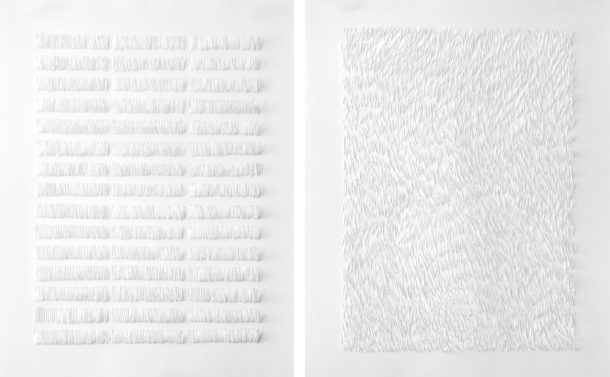
zaida-oenema-MB-8.jpg
field, knipel
from the series ‘fields’
no 1.1 (of 9 +1AP)
papercut on white acid free drawingpaper 50 x 65 cm
Erfurt
Her work was also on display at the Contemporary Contemplations exhibition at the Kunsthaus in Erfurt, Germany. The exhibition started in Amsterdam with Arti et Amicitiae, then traveled on to Berlin, the Künstlerhaus Bethanien and arrived then in Erfurt. “There was a lot of constructivist and reductive art on display, non-figurative. I feel very much at home there. It started with two curators who invited artists to the Arti exhibition. Artists have been added at every city.” There was a lot of interest in the exhibition and the reactions were good.
Finland
Zaida Oenema lived in Finland until she was five, her mother is Finnish, and belonged to the Swedish-speaking population. Every other year she goes to Finland. She graduated in 2004 from the Royal Academy and in 2009 from St. Joost. After St Joost, she was very happy at the RAM Gallery of Berry Koedam, until RAM stopped the gallery last year. Now she does the regulatory work herself. “With your own initiatives you can go a long way without a gallery. I have enough motivation to keep going. I trust that there is always something going to happen.” She loves being busy with work. “Of course I also have difficult days, but I firmly believe in art and its necessity.”
Carving
We walk to the wall where she points me to the ground. On the left a carved white tree and on the right bamboo branches. “One of the first carvings. I made them in 2016. ‘Funny’ I thought at the time. There is already a lot of simplification. It has become the beginning of the Fields series; the blades cut into grids.” We walk to another cupboard where she brings out the surgical scalpels. A whole set. She keeps carving for now. And burning of course.
Images 1) Self-portrait, work in progress, 2) Dance, 3) perfect dot, bethanien, 4) The Perfect Dot, 5) burning wind, 6) burning wind, detail, 7) burning, variation 3, 8) field 1 and 2 combi, 9) fields Gradient 2, 10) tree
http://www.zaidaoenema.com/
http://www.museumrijswijk.nl/
https://ifthenisnow.eu/nl/verhalen/de-wereld-van-de-haagse-kunstenaar-91-zaida-oenema
Disclaimer: The views, opinions and positions expressed within this guest article are those of the author Walter van Teeffelen alone and do not represent those of the Marbella Marbella website. The accuracy, completeness and validity of any statements made within this article are not guaranteed. We accept no liability for any errors, omissions or representations. The copyright of this content belongs to Walter van Teeffelen and any liability with regards to infringement of intellectual property rights remains with the author.

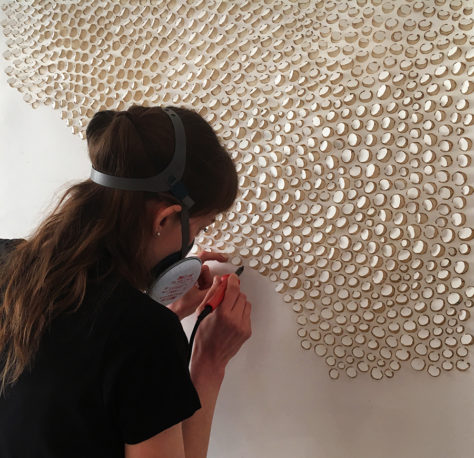
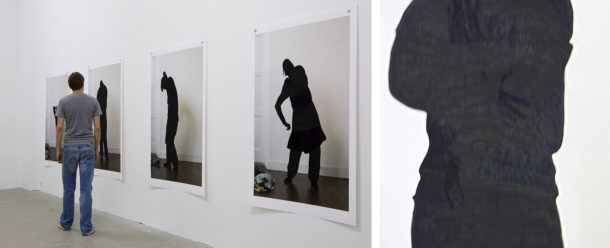
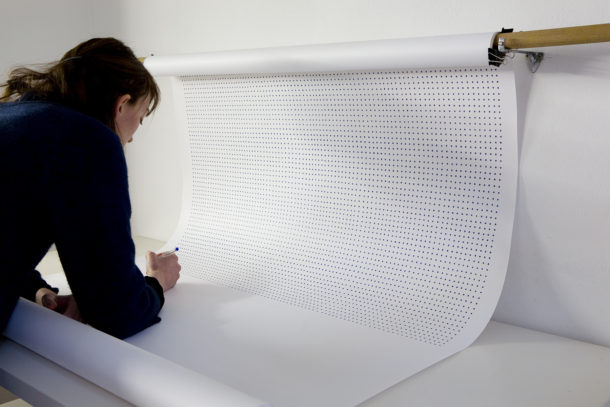
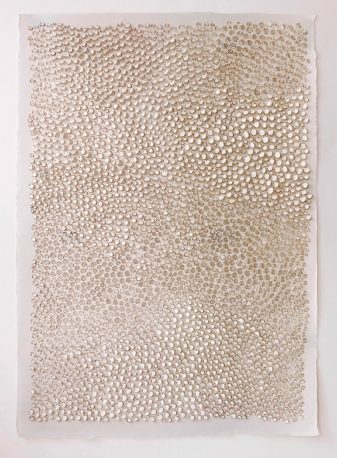

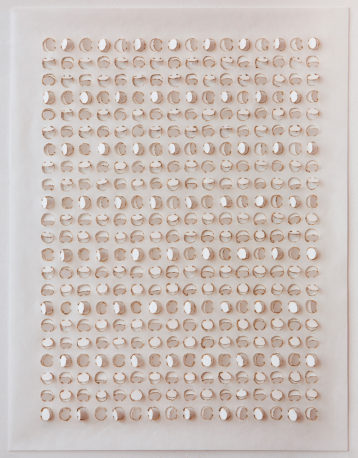
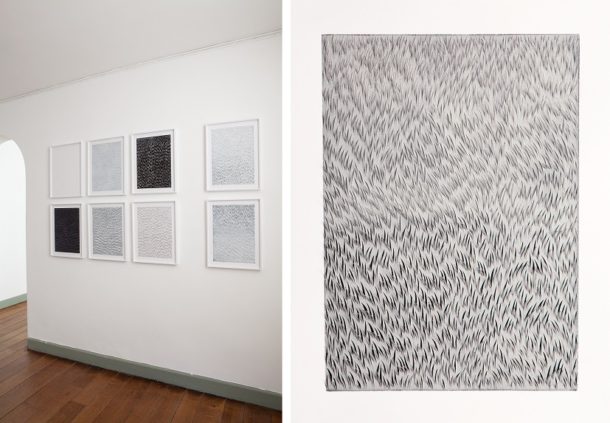















The opinions expressed by individual commentators and contributors do not necessarily constitute this website's position on the particular topic.